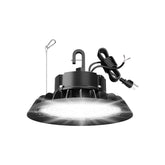What does 120 degree beam angle mean?
When shopping for LED lighting, you might notice terms like 120 degree beam angle. But what does beam angle mean, and why does it matter? For homeowners, DIY enthusiasts, and lighting buyers in the U.S., understanding light distribution is key to choosing the right fixture for your space. A 120 degree beam angle describes how widely a light spreads, impacting everything from your living room’s ambiance to your backyard’s safety.

Understanding Beam Angle
The beam angle measures the spread of light from a fixture, in degrees. A 120 degree beam angle casts a wide, even glow, covering a broad area without harsh hotspots. Think of it like a cone of light: the wider the angle, the more surface it illuminates. In LED lighting, a 120-degree beam angle is considered a standard for general-purpose lighting, balancing coverage and intensity.
For example, a 120 degree beam angle in a kitchen’s recessed LED lighting bathes the countertops in bright, uniform light, perfect for cooking or socializing. Narrower angles, like 30 degrees, create focused beams for spotlighting art, while wider angles, like 180 degrees, may feel too diffuse for targeted tasks.

Applications of a 120 Degree Beam Angle
A 120 degree beam angle shines in spaces needing broad illumination. It’s ideal for living rooms, offices, or outdoor patios where even light distribution enhances comfort and visibility. For instance, an outdoor LED lighting fixture with a 120-degree beam angle can light up a Chicago backyard, ensuring safe and inviting gatherings.
Compared to narrower angles, a 120-degree beam angle reduces the number of fixtures needed, saving on installation costs. It’s less intense than a spotlight but brighter than ultra-wide floodlights, making it versatile for both home and commercial use.
A 120 degree beam angle in LED lighting offers wide, even light distribution, perfect for general lighting in homes, offices, or outdoor spaces. Whether brightening a kitchen or a patio, it balances coverage and clarity. Next time you shop for lights, consider the beam angle to create the ideal ambiance for your space.
- Led Parking Lot Lights and LED UFO High Bay Lights (120° beam angle):
This wide beam Angle is suitable for places that require uniform lighting over large areas, such as parking lots and industrial areas with high ceilings. A 120° beam can cover a larger area, reducing shadows and dark zones.
- LED Construction LED Lights (360° beam angle):
This omnidirectional beam Angle is suitable for places that require all-round lighting, such as construction sites or temporary lighting needs. The 360° beam can ensure that the surrounding environment is fully illuminated, making it suitable for scenarios without specific directional requirements.
- LED Linear High Bay Lights (90° beam angle):
This medium beam Angle is suitable for places that require concentrated lighting, such as high-ceiling areas in warehouses or factories. A 90° beam can provide a strong lighting effect in a specific area and is suitable for environments that require higher brightness.
- GGJIA LED Loading Dock Lights (30° beam angle):
This narrow beam Angle is suitable for places that require focused lighting, such as loading and unloading areas. A 30° beam can concentrate light at a specific point or area, providing high-intensity local lighting and is suitable for scenarios that require precise lighting.









